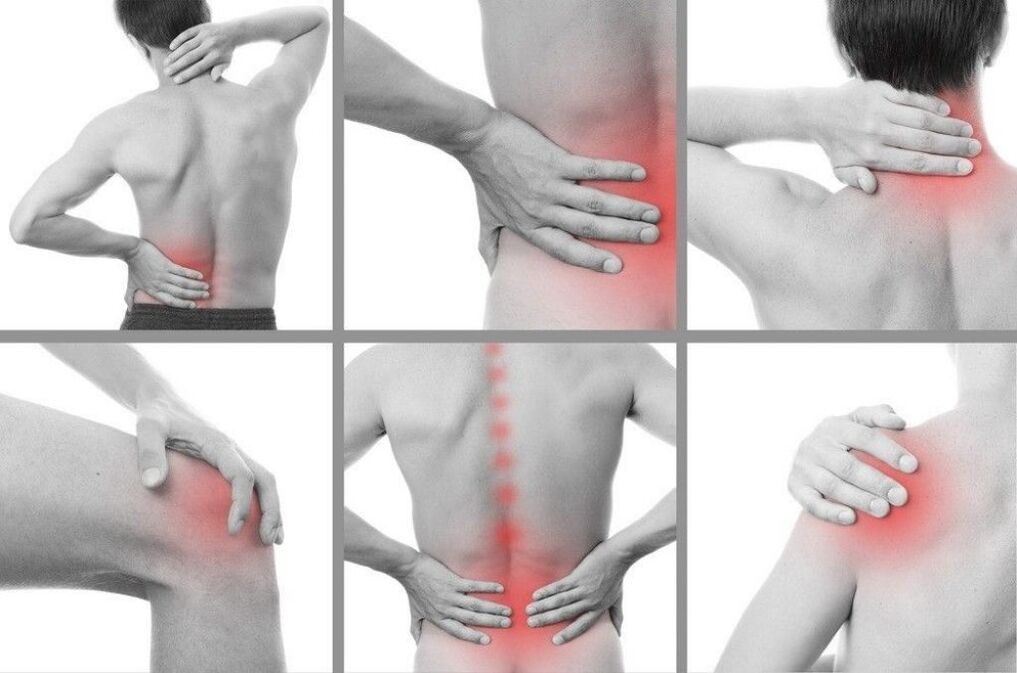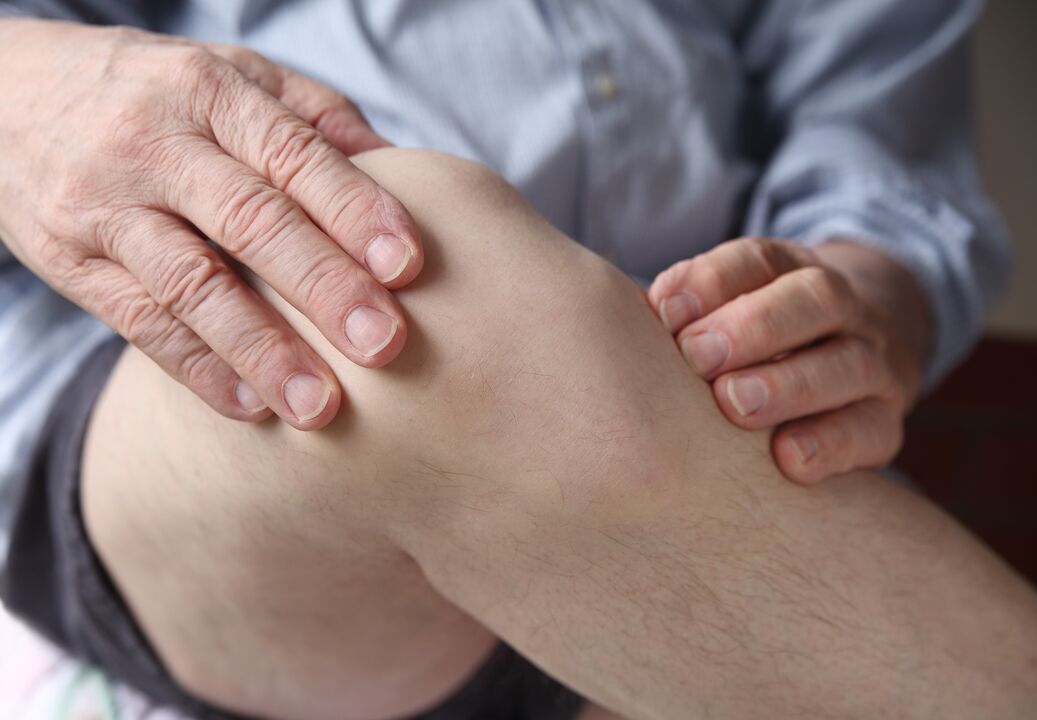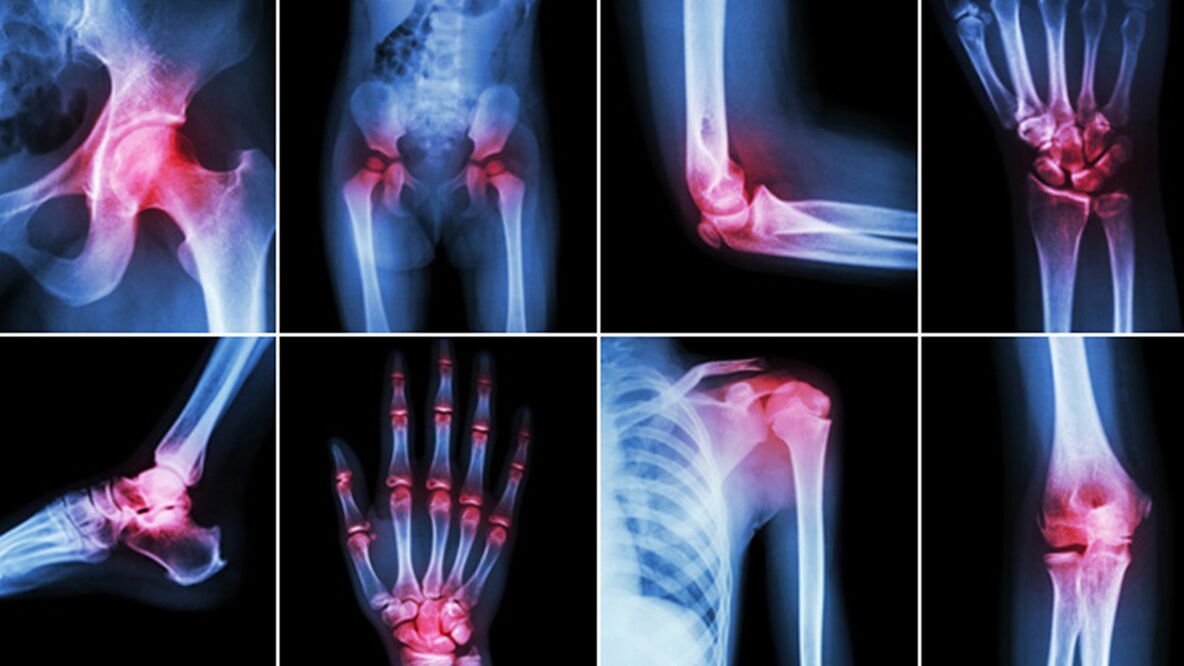Joint pain all over the body is not a disease but a symptom. At the same time, painful feelings often spread to the muscles, and as a result it can be difficult to even get out of bed. Many diseases lead to such unpleasant consequences, the treatment of pain is impossible without determining the exact cause. What symptoms to focus on and what to do?
The main causes of pain
If you have pain in more than one joint, not several, but all at once, it is a sign of systemic damage to the body. In addition, it is difficult to understand exactly where the pain is localized - in the joints, muscles, bones, or everywhere at once. The pain is felt all over the body, making it difficult to locate. Because of what all joints can hurt:
- Too intense physical activity.
- Infectious diseases.
- Pathological changes in connective tissue.
- Diseases of the vascular system.
- Oncological diseases.
- Neuralgia.
As can be seen from the above, it is impossible to immediately understand the causes of pain. The exact cause can be determined only after passing the appropriate examinations. With the exception of the hard physical work of the previous day, we are talking about diseases that need to be treated.

Why it's dangerous
First of all, severe pain throughout the body reduces mobility, but this is not the main danger. The main threat is a disease that has caused painful sensations in the joints. Self-medication in such cases is extremely dangerous, because it will lead to the fact that only the symptoms will pass, while the disease itself will progress. You can try to relieve the pain and possible swelling yourself, but after that you should definitely consult a doctor.
Symptoms of the disease
Every disease has symptoms that are unique to it. Since pain is the most noticeable sign, it is first necessary to define its characteristics:
- Type of pain (painful, sharp, cramps).
- Localization (joints, muscles around, bones).
- Whether it is moving through the body, or a separate area constantly hurts.
- Constant pain or attacks are occasional.
- Intensity sensation.

In addition, the patient may experience weakness, severe fatigue, or muscle aches. Further symptoms vary depending on the specific cause of the pain:
- Overvoltage. . . Excessive physical activity the previous day can lead to the fact that the next day the whole body will ache. This is due to the production of lactic acid which accumulates in the muscles. In this case, a good warm-up is enough to relieve the pain.
- Infections. . . Joint pain is often accompanied by diseases such as flu, fever, meningitis, and even ordinary acute respiratory infections in an advanced form. In addition to pain, the symptom is complemented by cough, skin rash, chills, weakness, nausea and indigestion, high body temperature.
- Viral hepatitis. . . In addition to liver damage, in addition to possible pain, there is also yellowing of the skin and sclera, worsening of appetite.
- Pathological changes in connective tissue. . . Arthritis, lupus erythematosus, polymyositis - all of these can cause joint pain. In addition, some diseases of the heart, kidneys, lungs, vascular and nervous system can also lead to painful sensations in the joints.
- Blood diseases. . . In addition to feeling pain in the body, the patient feels fever, the skin becomes pale, lymph nodes, liver and spleen are enlarged. In this condition, vulnerability to infectious diseases increases. In the acute form, such diseases are life-threatening if not treated in time.
- Oncology. . . With oncological tissue damage, joint pain can occur before the disease itself is diagnosed. In addition, symptoms such as weakness, weight loss, poor appetite, fever, mood swings, depression speak of oncology.
- Neuralgia. . . With diseases of the nervous system, in addition to pain in the joints and muscles, the patient may feel numbness of the fingertips, loss of sensitivity and weakness. In addition, the hair begins to fall out and the skin becomes dry and thinner.
If the pain in the joints is accompanied by any of the listed symptoms, that is the reason to consult a specialist.
Diagnostic methods
Who to contact with complaints of pain throughout the body:
- Rheumatologist.
- Hematologist.
- Oncologist.
- Infectious.
After the doctor examines the patient and hears the complaints, he should send him for an examination. The following diagnostic methods are used to identify the diagnosis:
- General urine analysis.
- General blood test.
- Blood biochemistry.
- LHC blood and smear analysis.
- Bone marrow puncture.
- CT and MRI.
- Neuromyography.
A comprehensive examination will give a complete picture of the patient's condition. Only then can we talk about a particular disease and prescribe treatment.

Treatment of joint pain
The method of treatment is chosen by the doctor depending on the data obtained during the examination. The most common is drug therapy. A wide range of medications can treat almost any cause of joint pain. The choice of drug groups depends on the type of disease:
- Antibiotics
- Anti-inflammatory drugs.
- Painkillers.
- Hormonal agents.
- Immunosuppressants
- Cytostatics.
Many drugs from these groups have serious contraindications - some of them should not be taken in the presence of tumors. In addition, almost all drugs have their own contraindications and side effects. This is one of the reasons why it is impossible to choose medications on your own and take them without thinking. The exact dose and type of medicine is prescribed only by a doctor. If there are no results after the course of application, the specialist can replace the drug with another.

Surgery is needed in extreme cases when drug therapy is impossible. Surgery is usually prescribed for tumors and blood diseases. In the case of cancer, the operation can be supplemented with radiotherapy, and in the case of serious blood diseases, a bone marrow transplant is required.
Prophylaxis
To prevent joint injuries, you need to follow six simple recommendations:
- Proper nutrition. . . First, a balanced menu will give the body all the substances it needs to function normally. Second, a proper diet will help you maintain your weight. Obesity is known to be one of the causes of joint pain.
- Chondroitin and glucosamine. . . These substances are essential for joint health. They are found in meat, cartilage and fish.
- Drinking regime. . . Fluid helps to restore metabolism, if there is not enough water in the body, the nutrition of organs, muscles and joints will be insufficient. You need to drink about 2 liters of water a day.
- Physical activity. . . Even regular gymnastics in the morning will help normalize blood circulation, so the joints will get enough nutrients.
- Caution. . . Any joint injuries should be avoided.
- Vitamin complexes and dietary supplements. . . Vitamins and minerals that are missing can be obtained from the preparation, the main thing is to choose them correctly.
Simple tips can help keep your joints healthy. In addition to adjusting the diet and daily routine, it is necessary to periodically undergo preventive medical examinations. This will help you spot the disease in time and start treatment.

















































